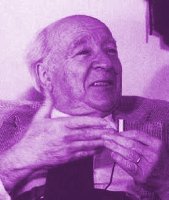November 7, 2025
Location: Janskerkhof 2-3, room 220.Abstract: In this talk, we consider a dynamical version of the Asakura--Oosawa--Vrij model of interacting hard spheres of two different sizes. We study their infinite-dimensional random diffusion dynamics, modelled with collision local times; describe the reversible measures; and observe the emergence of an attractive short-range depletion interaction between the large spheres. We also study the Gibbs measures associated to this new interaction, exploring connections to percolation, optimal packing, and phase transitions. This is joint work with Myriam Fradon.
Abstract: Although there is a rich literature on decision making uncertainty in the stochastic operations research the literature on such problems for spatial processes to be sparse. In this talk, I will present two studies. The first example is motivated by forestry, where the problem is to design optimal harvesting strategies. Formally, I will discuss a Markov decision problem in which the state space is the set of finite marked point patterns in the plane, the actions represent thinnings, the reward is proportional to the mark sum which is discounted over time, and the transitions are governed by a birth-death-growth process. I will show that thinning points with large marks maximises the discounted total expected reward when births follow a Poisson process and marks grow logistically. Explicit values for the thinning threshold and the discounted total expected reward over finite and infinite horizons are also provided. When the points are required to respect a hard core distance, upper and lower bounds on the discounted total expected reward are derived. The second study is motivated by the prevention of wildfires by means of removing flammable material from specific locations. Formally, we study the expected avalanche size in an Abelian sandpile model with and without intervention. We represent an avalanche as a sequence of waves in the spirit of Ivaskhkevich et al (1994). For square generators, we give explicit expressions for the impact of removing all sand grains from one vertex as a ratio of polynomials in the size of the square and identify the set of optimal vertices at which to intervene.
References:
- M.C. de Jongh, R.J. Boucherie and M.N.M. van Lieshout (2025) Preventing large-scale avalanches in the 2D Abelian sandpile model through strategic interventions. Work in progress.
- M.N.M. van Lieshout (2024) Optimal decision rules for marked point process models. Stochastic Envirnomental Research and Risk Assessment.


